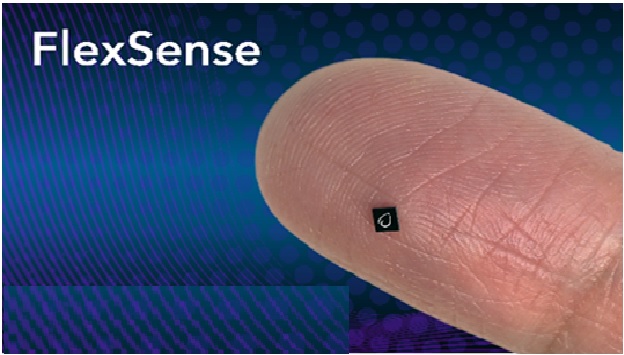4-in-1 Sensor Fusion Processor Open Doors for Intuitive IoT Applications
Synaptics Incorporated’s FlexSense family of sensor processors integrates 4 sensors in an ultra-low-power, tiny, single chip. The sensors include capacitive, inductive, Hall effect and ambient sensors into a single chip with proprietary algorithms. The IC incorporates a central microcontroller that connects to two proprietary low-power, fast analogue front end (AFE) engines. This solution offers lower latency along with easier sensor calibration and configuration. FlexSense can reduce system design, cost, configuration, and supply chain complexity in applications such as wireless stereo (TWS) earbuds, gaming controllers, AR/VR headsets, fitness bands, smart thermostats and many other IoT devices. [1]

Figure 1. 4-in-1 Sensor Fusion Processor Open Doors for Intuitive IoT Applications
Figure 1 shows in keeping with the corporate, the IC makes use of an 80% smaller space than present options. The FlexSense incorporates a central microcontroller that connects to AFE engines. These AFE engines rapidly and effectively sense and digitize knowledge from the capacitive and inductive parts on the contact surfaces of an IoT product. The Corridor impact sensors are carried out by way of metallic plates on the machine that detects magnetic fields, whereas an on-chip temperature sensor measures the ambient temperature. [2]
Capacitive sensing is typically used to detect finer grain touch, proximity, and actions such as fingers sliding on a surface. Inductive sensing can distinguish coarse grain touch, up to 256 levels of force, and actions such as knob rotation, while the Hall effect sensor detects magnetic fields, such as those from a magnet embedded in a docking station.
The integration of multiple sensors on a single chip achieves a number of critical goals, including reduced power, size, weight, and cost; easier sensor calibration and configuration; lower latency (critical for gaming and touch error mitigation); greater ability to execute more tightly coupled and accurate compensation algorithms to ensure baseline stability and adjust for temperature drift to enhance overall reliability and performance; and lower assembly cost, higher yield, and a simplified supply chain due to the use of a single device instead of multiple discrete components. [3]
The result is a single highly flexible, stable, and reliable sensor processor measuring 2.62mm2, that can replace up to four ICs with a combined size of 16.04mm2 for an 80% decrease in footprint. It consumes 240µW (typically) in-ear (for a TWS application), and 10µW in a dock or “sleep” mode. [3]
The fruit (tomato) is already known to naturally contain a vitamin D precursor known as 7-DHC, albeit at very low levels and only in the leaves, which aren’t usually eaten. [2]
References:
- https://www.electronicsforu.com/tech-zone/tech-sensors/4-in-1-sensor-fusion-processor-open-doors-for-intuitive-iot-applications
- https://electronicstechnology.in/4-in-1-sensor-fusion-processor-open-doors-for-intuitive-iot-applications/
- https://www.eetasia.com/express/synaptics-4-in-1-sensor-fusion-processor-ushers-in-era-of-intuitive-iot-applications/
Cite this article:
Thanusri swetha J (2022), 4-in-1 Sensor Fusion Processor Open Doors for Intuitive IoT Applications, Anatechmaz, pp. 304

